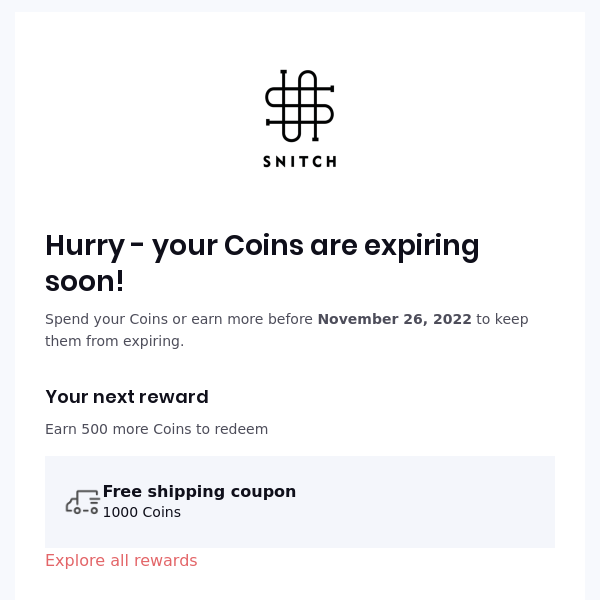Snitch: Marketing, Sales Channels and Distribution
Emerging brands frequently serve as beacons of creativity and originality in the fast-paced world of fashion, where trends shift and styles reinvent themselves. This Snitch case study digs into the story of Snitch, a growing force in the men’s apparel industry, as it starts on a transformational path. From its inception to the present day, Snitch has navigated the complexities of the fashion industry, weaving a story of innovation, tenacity, and strategic vision.
Snitch, a dynamic brand in the industry, has earned its own niche through innovation and distinctiveness. Snitch, known for its unique products/services, commands a strong presence in the business. Snitch, founded in 2019, has developed as a fast-fashion label for men’s clothes. From humble beginnings to notable achievements, Snitch’s story exemplifies persistence and adaptation.
Learning Lessons from Covid-19

Ask experts which industry was most affected in the aftermath of the pandemic, and we are likely to hear a unified response: Brick-and-mortar retail exists both globally and in India. Unlike past slowdowns or recessions caused by overexpansion and risk aversion, the Covid-19 crisis was unique.
The enormous health crisis disrupted supply chains, froze store traffic for months, and brought all offline consumer activity to a grinding standstill. Many small firms were obliged to reduce or shut their operations unless safety and convenience were prioritized. Because of its newfound importance, the ecommerce model of buying online and receiving home/kerb delivery exploded.
What came next was logical. Direct-to-consumer (D2C) firms made their mark and found their mojo thanks to a digital-first strategy, zero intermediaries, nimble operations, and, most crucially, a customer-centric rebranding that big-box retailers rarely undertake. The success story of Bengaluru-based men’s fast fashion firm Snitch serves as an example.
“During the pandemic, we were left with excess goods. It was a major reason why we went online. We initially considered using marketplaces, but we also wanted our brand to achieve recognition. “That’s why we decided to launch our website,” Dungarwal explained.
Snitch’s Customer Engagement & Awareness Strategy

Being a customer-first brand entails developing a two-way engagement with your customers in order to foster a brand community. To foster a strong sense of belonging, Snitch launched the Snitch Ambassador Program, which aims to build a community of brand enthusiasts and ambassadors.
Customers could become Snitch Ambassadors by posting a picture of their Snitch purchase on their Instagram story and tagging @snitch.co.in. As a mark of appreciation, all ambassadors were given a unique 20% site-wide discount code. But the benefits didn’t end there; their Instagram usernames were converted into unique coupon codes that provided a 15% discount to their friends and relatives on the Snitch website. It’s all about making each customer feel sincerely appreciated!
To raise awareness about this possibility, Snitch prominently displayed a banner on their website calling customers to become brand ambassadors. They also connected with their audience on Instagram with stories that drove them to the website, and included a footer in every email inviting them to become a “Brand Ambassador.”
Recognizing the necessity of regularly connecting with customers and providing tailored experiences is critical to achieving business growth and success. Building on consumer advocacy has improved Snitch’s brand awareness, social media presence, and client base.
Role of Instagram for Snitch

With over a million Instagram followers, Snitch urges customers to use the hashtag #snitchit in their posts. This not only fosters a sense of community among customers, but also enables the company to display and showcase customer content, increasing brand visibility and credibility.
Snitch also operates various influencer marketing campaigns on Instagram, which is an effective technique for reaching their target consumers and establishing a strong online presence. Some of these commercials involve style reels, in which influencers create ensembles with Snitch apparel pieces.
The business also runs various Instagram contests. They accomplish this by giving followers a prize if they follow a specific set of instructions, which include tagging other users in the comments. To participate their contests, players must also follow the Snitch Instagram account, which might result in a huge boost in follower count.
When participants tag friends, like, comment, or share your posts, the overall engagement on the account increases. As users interact with contest postings, their activities might be seen in their friends’ feeds, introducing the company to a larger audience and generating buzz, which helps to enhance brand visibility.
How Did Marketing Automation Changed The Game For Snitch & It’s Marketing Strategy?

Initially, the D2C brand failed to develop a well-thought-out marketing plan and lacked the automation capabilities needed to compete with other businesses.
“Initially, it was only about selling. However, we quickly recognized that developing a brand is more crucial. “That’s when we started to focus more on retention marketing,” Dungarwal explained.
About eight months ago, Snitch collaborated with the martech platform Wigzo to automate its marketing efforts. Wigzo, established in Delhi, specializes in multichannel marketing solutions that include email, online, and mobile applications.
With Wigzo’s assistance, Snitch was able to send automated marketing notifications to customers who had abandoned their carts, encouraging them to complete their purchases.
The brand stated that employing SMS and WhatsApp channels resulted in the greatest CTR and open rates.
According to Dungarwal, after utilizing Wigzo’s services, Snitch’s retention rate climbed by 15-20%, and the D2C is currently experiencing 15-20% revenue growth month after month.
Snitch released its app six months ago, and it now accounts for more than 35% of purchases. As part of its next phase of expansion, the D2C brand plans to create digital experience stores around India, where its best-selling products will be offered.
“In the next three-five years, we aim to be one of the biggest fashion brands in India and then take our operations to the global markets,” according to Dungarwal.
Breakdown of Snitch’s Sales Strategy and it’s Sales Channels
Here’s a breakdown of their sales strategies:
1. Direct-to-Consumer (D2C) via Website
- Primary Channel: Snitch’s website serves as the primary venue for displaying its items and engaging with customers.
- Advantages: Full control over the consumer experience. Better profit margins than third-party platforms.
- Features: Regular updates on collections, discounts, and limited-time offers. A user-friendly interface allows for easy shopping.
2. E-Commerce Marketplaces
Snitch partners with major online marketplaces such as Amazon, Flipkart, Myntra & Ajio
- Advantages: Increases reach to a larger audience. Utilizes the confidence and traffic of existing markets.
- Tactic: Provide special bargains or products on these sites. Enhanced product listings with high-quality photographs and extensive descriptions.
3. Social Media Marketing and Sales
Platforms like Instagram, Facebook, and Pinterest.
- Strategies include shoppable postings on Instagram and Facebook to facilitate direct purchases.
- Influencer partnerships for promotion and endorsement.
- Engaging reels and stories about new collections, behind-the-scenes footage, and customer feedback.
4. Performance Marketing Channels:
- Google Ads targets search, display, and commerce ads.
- Social Media Ads via Facebook, Instagram, and YouTube advertisements tailored to specific audiences.
- Their focus is on retargeting cart abandonment campaigns.
- Geo-targeted ads will broaden regional reach.
5. Celebrity Endorsements and Influencer Partnerships
- Using popular influencers and celebrities to market items, particularly via social media campaigns.
- Influencers frequently display the brand’s adaptability and flair, which appeals to younger audiences.
6. Offline Pop-Up Stores and Events
Snitch arranges or participates in pop-up stores and shows to meet with customers in person.
- Purpose: Increase brand visibility. Provide an in-person shopping experience for potential customers.
7. Affiliate Marketing
- Working with bloggers, fashion influencers, and other affiliates to increase traffic to their website.
- Affiliates earn a percentage on each sale, which encourages wider promotion.
8. Email and SMS Marketing
- Regularly interacting with their audience about new launches.
- Exclusive savings and flash sales.
- Brand news and updates.
Tactics: Offer personalized product recommendations based on past purchases. Recovery emails for abandoned carts.
9. Loyalty Programs and Customer Retention
- Offering loyalty awards to repeat clients.
- Long-term users receive exclusive privileges such as early access to sales and exclusive pricing.
Overall, Snitch’s use of technology has allowed it to build a brand that is dynamic, engaging, and sensitive to his clients’ requirements. By staying ahead of the curve and utilizing cutting-edge tools and techniques, Snitch is establishing himself as an industry leader and a digital force to be reckoned with.



